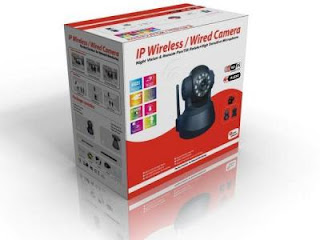A recommended reading for all rechargeable batteries users:
Coding Horror: Adventures in Rechargeable Batteries
Read More
Coding Horror: Adventures in Rechargeable Batteries

 So first, a short description for the late discoverers like me: the triops are small prehistoric crustaceans whose eggs can dry and stays viable for many years. They hatch in temporary water pools formed by rain, generally under warm climates. Their short life (around 3 months) is spent at eating almost anything small enough for them (including their siblings), and laying eggs. When they die of old age or because the pool dried, the eggs are waiting there, ready for the next shower.
So first, a short description for the late discoverers like me: the triops are small prehistoric crustaceans whose eggs can dry and stays viable for many years. They hatch in temporary water pools formed by rain, generally under warm climates. Their short life (around 3 months) is spent at eating almost anything small enough for them (including their siblings), and laying eggs. When they die of old age or because the pool dried, the eggs are waiting there, ready for the next shower. The star of the tank, a superb small red crab, trapped himself in one of the filter chambers and could not climb it back.
The star of the tank, a superb small red crab, trapped himself in one of the filter chambers and could not climb it back.






 I undertook a risky operation to seriously recycle the water. I managed to transfer them into a second container with clean water at good temperature. Hopefully enough water from the old container was transferred with the triops so they won't be too stressed.
I undertook a risky operation to seriously recycle the water. I managed to transfer them into a second container with clean water at good temperature. Hopefully enough water from the old container was transferred with the triops so they won't be too stressed. They're still alive and shed their exoskeleton. This molting process is supposed to repeat several times during their life. I now give them a bit of food daily.
They're still alive and shed their exoskeleton. This molting process is supposed to repeat several times during their life. I now give them a bit of food daily. Now they can eat un-crushed pellets of triop food.When they find one, they grab it and go everywhere with it for a while.
Now they can eat un-crushed pellets of triop food.When they find one, they grab it and go everywhere with it for a while. It happened when I was away and took only a few minutes!
It happened when I was away and took only a few minutes!
 Day 12: unexpected end of the experiment:
Day 12: unexpected end of the experiment:
 Nintendo has to do something against piracy, and unfortunately, the collateral damage is that homebrew initiatives are impacted too.
Nintendo has to do something against piracy, and unfortunately, the collateral damage is that homebrew initiatives are impacted too.


 The user interface is particularly nice and clean, but that's the least you can expect from a card of this price, there's an interactive demo of it on the product web site.
The user interface is particularly nice and clean, but that's the least you can expect from a card of this price, there's an interactive demo of it on the product web site.




 white as shown, and exhibit a picture of the older fi8901w on the reverse side.
white as shown, and exhibit a picture of the older fi8901w on the reverse side. The User Interface
The User Interface : With that said and since not all the shops display the box, another clue is the look of the web interface. The login page of the newer firmware above is a bit more colourful but the rest remains mostly as described here.
: With that said and since not all the shops display the box, another clue is the look of the web interface. The login page of the newer firmware above is a bit more colourful but the rest remains mostly as described here. Below is an example of a non-Foscam base (click on it for a close-up):
Below is an example of a non-Foscam base (click on it for a close-up):

 one of the most quickly needed tool is a good compression/decompression utility. This one is my favourite. It supports most formats for packing and unpacking (7z, Zip, GZip, BZip2, Tar) plus a bunch of others for unpacking only (Rar, War,...). Context menu can be arranged to your taste for faster handling of the archives.
one of the most quickly needed tool is a good compression/decompression utility. This one is my favourite. It supports most formats for packing and unpacking (7z, Zip, GZip, BZip2, Tar) plus a bunch of others for unpacking only (Rar, War,...). Context menu can be arranged to your taste for faster handling of the archives.
 This small tool will help you to keep under control the applications that slow down your system at boot time by stacking in the various autorun locations.
This small tool will help you to keep under control the applications that slow down your system at boot time by stacking in the various autorun locations.
 There is one gaming area where computers still beats the dedicated game consoles hands down: Flight Simulators.
There is one gaming area where computers still beats the dedicated game consoles hands down: Flight Simulators.
Well, not entirely, in Armorica one village bravely resist the Romans, and with success...(*)A well advanced project exist (started around 1996) in the SourceForge community called FlightGear.
 This ambitious open-source flight simulator wants to offer features comparable to the big o
This ambitious open-source flight simulator wants to offer features comparable to the big o

